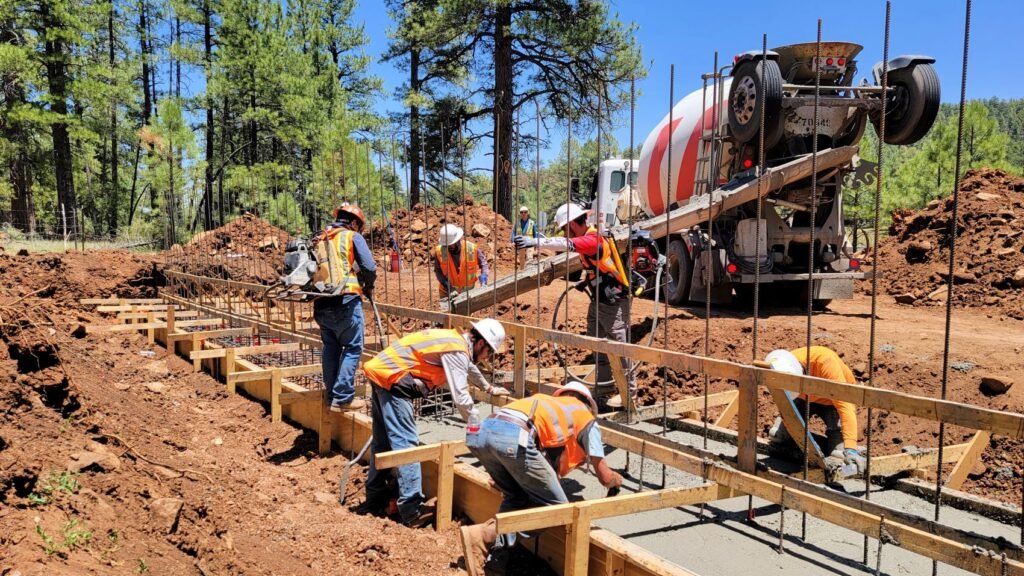Wildlife Overpass Project in Northern Arizona Boosts Local Economy
Groundbreaking sounds are echoing from Willard Springs, where construction for a wildlife overpass is underway along I-17, roughly 15 miles south of Flagstaff. This project aims to significantly decrease wildlife-vehicle collisions while revitalizing local ecosystems, all while injecting much-needed resources into the northern Arizona economy.
According to SEMA Construction, Inc. Project Superintendent TK Boyer, the initiative is primarily funded through the federal highway management’s Wildlife Crossings Pilot Program Grant.
Focus on Local Employment
SEMA, with offices in Flagstaff and Munds Park, prioritizes local hiring and subcontracting as part of its operational strategy, which in turn fosters community development in northern Arizona. “Many of our staff are from this area,” Boyer shared, noting his own ties to Shaw, where he raises his family. The current crew is made up of workers from Flagstaff, Wickenburg, and other rural parts of Arizona.
Clerogers, a project manager and civil engineer, also resides in Flagstaff, reinforcing SEMA’s commitment to keeping skilled positions within the community.
Supporting Local Suppliers
The project boosts various local businesses, from concrete suppliers to heavy equipment operators. CEMEX, which operates a plant in Flagstaff, is providing around 350 trucks’ worth of concrete for the endeavor. Their materials come from sites like Gray Mountain and Clarkdale Aggregates. Pine’s trucking services are also supplying some materials, thereby supporting local employment.
Several other northern Arizona businesses are involved, contributing to the local economy:
- Brundage-Bone Concrete Pumping, now with a new branch in Flagstaff.
- Southwest Industrial Ligging, handling heavy lifting from their Flagstaff office.
- Paradise Rebar, Inc., based in Phoenix, led by residents of Munds Park.
- White Cap, a supply store located in Flagstaff.
- Evergreen Spray Service, a women-owned business from Prescott focused on invasive species removal.
Additionally, SEMA sources equipment rental from regional suppliers like Empire Cat and Sun State Equipment, further emphasizing local involvement.
“The entire project adheres to the US Purchasing Act,” Boyer remarked. This ensures that nearly everything used is sourced domestically, with many items coming from local vendors.
Infrastructure with Wildlife Safety in Mind
Right now, construction crews are installing features for elk escape routes, providing one-way exits for animals trapped on the highway side of an 8-foot fence. This initiative will not only include vegetated elevated crossings but also 16 miles of fencing to guide deer and even black bears toward safe passages.
“This system has a track record of success,” Boyer noted, reflecting on a previous project where he helped create a successful wildlife path on State Route 260.
Data from the Arizona Game and Fish Division shows that the stretch of I-17 designated for overpasses and fencing had the highest rate of wildlife-vehicle collisions in the area. Between 2018 and 2022, this section accounted for 58% of such incidents, primarily involving large animals.
In recent years, officials tracked a herd of over 200 elk near Flagstaff and recorded numerous wildlife-vehicle collisions.
“In our studies, we documented around 100 elk and deer fatalities annually on I-17 between Stoneman Lake and Flagstaff,” said Boyer. Notably, tracking crashes involving commercial vehicles is tricky, as drivers sometimes don’t report incidents unless significant damage is done.
Reflecting on the importance of the overpass, Boyer pointed out that it would likely see increased use over time as elk establish movement patterns.
Long-Term Economic Benefits
With project completion slated for fall 2026, the economic advantages are expected to continue for at least two more construction seasons. The initiative aims to yield long-term results like reduced vehicle damages, lower insurance claims, and improved driver safety.
As construction progresses, the Arizona Department of Transportation will remind drivers to reduce speed and remain alert in active zones near Willard Springs.







